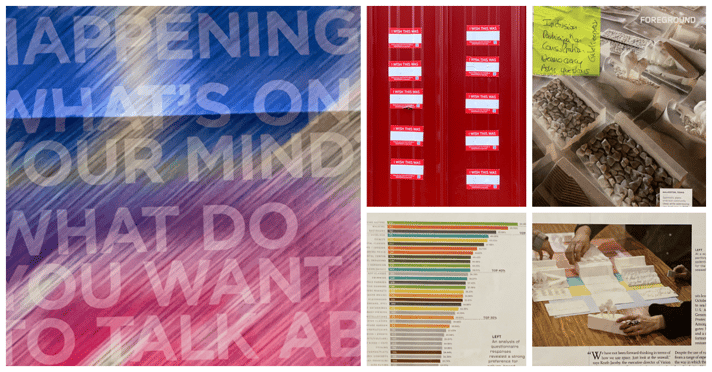How to get started with co-design?
Micène Fontaine, March 1, 2022
Think about "sticky notes," what comes to mind?

Does it conjure up ideas of some participatory and iterative process? User testing, focus groups, brainstorming, or design thinking of some sort? To-do lists? Learning aid?
It could be any of those things. For designers, it's a simple way to invite the participation of various stakeholders into the design process, gather and sort through their feedback, and co-design the optimal solution.
Sticky notes are one of many tools in the participatory design toolbox. Designers and architects who embrace this approach will usually say they design "with" rather than "for." It's a subtle change in language, yet it reflects a powerful shift in their approach to design: Away from design decisions being made "about and for" people to being made "with" them.
The list of benefits to this approach is long, but neither words nor sticky notes alone will help us reap the benefits of co-design. For that, we need to adjust our mindset and approach each new project with a renewed sense of curiosity and humility - and a game plan to keep us on track. That game plan is the co-design framework, which we explored in our AIA- and IDCEC-approved Change by Design session led by Bibiana Pinto.
I love co-design because it shifts the focus from scarcity to abundance, from transactional to transformational. And - as Kelly Ann "KA" McKercher also reminds us of in their book Beyond Sticky Notes: Co-design for Real - it's about "seeing an abundance of experience, ideas and energy for change" - by design :-)
PS: To start exploring this topic on your own, Kelly Ann McKercher's book, website or quiz are good places to start. We get nothing if you don't buy the book and we still get nothing if you do 🌈 KA's site is just full of great resources.




